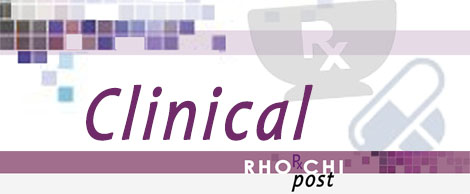
|
Using Bacteriophage Enzymes to Stay One Step Ahead of M...
December 1, 2014 - Featured , In the News / Politics By: Davidta Brown, Copy Editor [Content-Focused] – It’s difficult to have a discussion about antibiotics without mentioning the developing crisis of antibiotic-resistance. Pathogens like MRSA (methicillin-resistant Staphylococcus aureus) have become a part of the general public’s consciousness – a household name and a community-acquired “superbug.” With the last new class of antibiotics developed in the… |

|
Combating Counterfeit Drugs...
October 1, 2014 - Featured , In the News / Politics By: Azia Tariq, Staff Editor – With the sale of counterfeit drugs reaching an alarmingly higher rate than ever, The U.S Food and Drug Administration (FDA) in collaboration with the Skoll Global Threats Fund, the U.S. Pharmacopeia (USP), the National Institutes of Health (NIH), the Centers for Disease Control and Prevention (CDC), and the multi-agency… |

|
Pediatric Hypertension...
August 1, 2014 - Clinical , Featured By: Anthony Botte and Tyler Valente, PharmD Candidates c/o 2016 – Diseases which are prevalent within the pediatric population require distinct protocols for treatment accompanied by the utmost care and precision. Pediatric hypertension (HTN) is one disease state in particular that has come to the forefront of medical practice in the United States over the… |

|
The Dangers of Intrathecal Baclofen...
June 1, 2014 - Clinical , Featured By: Ada Seldin, Staff Editor – Intrathecal baclofen (ITB) is indicated for the treatment of intractable spasticity caused by spinal cord injury, multiple sclerosis, spinal ischemia or tumor, transverse myelitis, cervical spondylosis, cerebral palsy, and degenerative myelopathy.1 Baclofen inhibits both monosynaptic and polysynaptic reflexes at the spinal cord level by decreasing excitatory neurotransmitter release from… |

|
Riociguat (Adempas®) New Drug for Pulmonary Hypertens...
April 1, 2014 - Clinical , Featured By: Hayeon Na, Co-Copy Editor [Content-Focused] – On October 8th of 2013, Bayer’s new drug riociguat (Adempas®) was approved for the treatment of patients whose pulmonary hypertension (PH) belongs in WHO groups 1 and 4.1 Riociguat (Adempas®) is a soluble guanylate cyclase (sGC) stimulator, and currently the only one of its kind on the market.… |

|
Long Term PPI Use Heightens Concern of Associated Healt...
February 1, 2014 - Clinical , Featured By: Tamara Yunusova, Senior Staff Editor – Proton Pump Inhibitors (PPIs) are acid-reducing agents that have multiple uses in the treatment and prophylaxis of conditions such as peptic ulcer diseases, H. Pylori infection, Zollinger-Ellison syndrome, GERD, and NSAID gastroduodenal ulcers. Their versatility in treating a wide range of conditions, unparalleled efficacy over their Histamine-2-receptor antagonist… |

|
Say Hello to JNC8: New Hypertension Guidelines...
January 1, 2014 - Featured , In the News / Politics By: Frances Trosa PharmD Candidate c/o 2015 – After much anticipation, the report from the Eighth Joint National Committee (JNC 8) has arrived! Panel members appointed to the committee have created evidence – based recommendations to assist physicians in managing hypertensive patients. A major difference between the JNC 7 report and the JNC 8 report… |

|
Newly Approved: Macitentan (Opsumit®)...
December 1, 2013 - Clinical , Featured By: Rebecca Gilene, PharmD Candidate c/o 2014, St. Louis College of Pharmacy – The FDA approved macitentan (Opsumit®) on October 18, 2013 for the treatment of pulmonary arterial hypertension.1 Pulmonary arterial hypertension, often referred to as PAH, is a disease characterized by high blood pressure in the arteries between the heart and lungs. An increase… |

|
New Drug to Treat HIV-1 Hits the Market...
October 1, 2013 - Clinical , Featured By: Ada Seldin, Staff Editor – On August 12,2013, a new weapon against HIV-1 infection was added to the existing armada. Dolutegravir, the third integrase strand transfer inhibitor to attain FDA approval, targets a protein essential to HIV replication. HIV-1 is the predominant type of HIV virus, the other being HIV-2, which is endogenous to… |

|
Noninvasive Cancer Screening—Will We Ever Get It Righ...
June 1, 2013 - Clinical , Featured By: Frances Sousonis, Candidate c/o 2017 – Unfortunately, cancer is a disease about which many are able to share stories. All too often, beloved persons are diagnosed with cancer, or, more regrettably, loses their battle with the beast. Colon cancer is the third most common cancer in the United States and around 150,000 people each… |

|
Calcium Intake and Risk of Myocardial Infarction...
February 1, 2013 - Clinical , Featured By: Lila Ahmed, PharmD Candidate c/o 2013 – In the past, numerous research efforts have attempted to prove the benefits and risks of calcium and multivitamin supplements with little success. Most of the studies performed were inconclusive and did not provide us with significant data; while some studies have found that calcium is beneficial for… |

|
Brand Vs. Generic: What Every Prescriber Should Know...
September 1, 2012 - Clinical , Featured , Professional Advice / Opinions By: Marina Yermolayeva, PharmD Candidate c/o 2013 – “I’m allergic to the generic; I need the brand name medication,” is a common claim heard by many health care providers. Managed care organizations get numerous calls from doctors and patients requesting prior authorizations to approve brand name medications whilst there are generic alternatives available on formulary.… |

|
Artificial Saliva Agents in Xerostomia...
July 1, 2012 - Clinical , Featured By: Neal Shah, Co-Editor-in-Chief – Xerostomia, commonly known as dry mouth, is an anti-muscarinic side effect of numerous medications. Antidepressants, analgesics, diuretics, and antihistamines have a high propensity to cause xerostomia.1 Xerostomia may also result from Sjogren’s syndrome, Parkinson’s disease, and various chemotherapy agents.2 Traditionally, muscarinic agonists like pilocarpine have been used to reverse xerostomia.… |

|
Impact of Gender and Race on the Efficacy on Opiods...
June 1, 2012 - Clinical , Featured By: Lunbao (Jerry) Huang, Pharm.D. Candidate c/o 2013 – Pain is a very difficult condition to manage, as clinicians have only subjective findings to work with. Opioid medications are currently the cornerstones for the management of moderate to severe pain; however, it is often problematic to determine a patient’s real ‘need’ for opioids. Physicians’ clinical… |

|
Proton Pump Inhibitor Use and Complications...
June 1, 2012 - Clinical By: Lauren Kaveski, Pharm.D. Candidate c/o 2013 – We see proton pump inhibitors (PPIs) used in many medication regimens, but it is unknown whether the majority of patients receive these medications for appropriate durations or indications. For all labeled indications, other than Zollinger-Ellison Syndrome (a rare condition characterized by damaging gastrin hypersecretion and subsequent hydrochloric… |

|
Role of Calcium Channel Blockers and Beta Blockers in C...
May 1, 2012 - Clinical , Featured By: Lunbao Huang Pharm D. Candidate c/o 2013 – The seventh report of the Joint National Committee on high blood pressure (JNC-7) states that most classes of antihypertensive drugs such as angiotensin converting enzyme inhibitors (ACEIs), angiotensin-II receptor blockers (ARBs), beta-blockers (BBs), diuretics, and aldosterone-receptor antagonists can be used for hypertensive heart failure patients except… |

|
Counterfeit Prescription Medications: A Global Threat...
April 1, 2012 - Featured , In the News / Politics By: Lunbao (Jerry) Huang, Pharm.D. Candidate c/o 2013 – Counterfeit prescription medications are becoming a great concern for us. They have increased worldwide costs and endangered our public safety. Activities related to counterfeit drugs cost our healthcare system an estimated $75 billion in 2010. Many patients were seriously injured and died due to counterfeit medications.… |

|
CHF, a Rare but Serious Presentation of Graves’ disea...
March 1, 2012 - Clinical , Featured By: James Schurr, Pharm.D. Candidate c/o 2014 – Graves’ disease is an autoimmune disorder that results in a state of thyrotoxicosis, or a cause of hyperthyroidism, due to the Immunoglobulin G-mediated agonism of thyroid stimulating hormone (TSH) receptors located on the thyroid. Stimulation of TSH receptors causes an increase in circulating thyroxine (T4) and triiodothyronine… |

|
Proton Pump Inhibitors and the Treatment of Osteoporosi...
February 1, 2012 - Clinical , Featured By: Neal Shah – Osteoporosis is a disease of the bone characterized by decreased bone mineral density (BMD), which reduces the ability of bone to provide adequate structural support. The main cause of this decreased BMD is inadequate calcium intake or absorption. The decreased BMD can cause diffuse lesions throughout the skeletal system and can… |

|
Clevidipine in the Management of Hypertensive Emergency...
January 1, 2012 - Clinical , Featured By: Neal Shah – Defined by the Joint National Committee, hypertension (HTN) is a systolic blood pressure (SBP) greater than or equal to 140 mmHg and a diastolic blood pressure (DBP) greater than or equal to 90 mmHg. Patients with Stage 1 HTN have a SBP between 140 and 159 mmHg and DBP between 90… |

|
Ivabradine: A Novel I(f) Blocker for Stable Angina...
December 1, 2011 - Clinical By: Neal Shah – Part I: Preface. Part II: Brief review of cardiac electrophysiology. Part III: Ivabradine as a novel If blocker for the use of stable angina. Part IV: On the horizon: trimetazidine. – PREFACE When viewed anatomically, the heart may seem like a simple organ. However, the electrophysiological aspects of the heart are… |